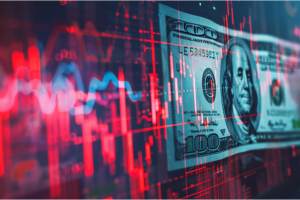
Recent reports show that consumer confidence in the United States saw a rise at the end of the month of May. The surge in confidence broke a three-month decline streak, boosted by a strong labor market.
According to the Conference Board’s index, the consumer confidence scale increased to 102 from 97.5 in April. That also surpassed Bloomberg analysts’ forecast of 96. Economists have pointed to the strong labor market’s effect in creating such an environment, with current business conditions for consumers remaining tight.
Let’s dive into what the data suggest and why this could be the case.
The Data
According to data, only 13.5% of consumers find job hunting hard, an improvement from April’s 15.5%. Although there has been a slight increase in unemployment, it stayed below 4% for over 2 years now. This is the longest period since the Vietnam War. Moreover, unemployment benefit claims also remain low and stable, while wage growth has outpaced inflation.
Studies also showed that consumers still find food and grocery prices a dilemma. That has hindered confidence rebound. According to the Conference Board’s data, this has seen an increase in the 12-month inflation expectations by 5.4% from the previous 5.3%. Consumers now await higher inflation measures and interest rates.
Moreover, data from the Conference Board also showed that Americans in the upper bracket and earning over $100,000 feel positive about the economy. That has boosted record-high stock markets. Confidence was mostly found in those under 35 years old who earn over $100,000.
Additionally, 48% of consumers anticipated rising stock prices in the next year, the third-highest level ever recorded.
What Caused the Rebound?
The dollar rose on Tuesday as U.S. Treasury yields reached a four-week high due to weak auctions of two-year and five-year notes. This followed unexpectedly improved U.S. consumer confidence in May after three months of decline. Adam Button, ForexLive’s chief currency analyst, attributed the dollar’s rise to the bond market turnaround and stronger growth signals from the confidence report.
According to U.S. economic reports, the market exceeded in Q1, with no major signs of deterioration in the labor market. However, inflation concerns are still around, with hopes of higher interest rates to support the dollar.
According to Fed President Neel Kashkari, the central bank should wait for the right inflation progress report before cutting the rates.
April’s lower-than-expected consumer price inflation briefly fueled hopes for Fed rate cuts, but officials want more progress before easing policy. Button noted the Fed’s lack of urgency to cut rates, citing the U.S. economy’s strength. The dollar index rose slightly to 104.59, while the euro and sterling had minor changes.
What Boosts Consumer Confidence?
Consumer confidence, a key economic gauge reflecting optimism about the economy and personal finances, significantly impacts economic activity. During growth periods, consumers are typically more optimistic, leading to increased spending, particularly on significant purchases like cars and appliances, bolstering economic expansion.
A decline in consumer confidence will only lead to reduced spending, which affects both businesses and the economy. If a recession continues, it could be bad for everybody. The Consumer Confidence Index is a helpful tool to use for consumers, investors and the Fed.
As of recent data, consumer spending in the U.S. represents nearly 70% of the total GDP. A critical aspect of measuring overall consumption is assessing consumer sentiment, solely from the consumer’s perspective. This article highlights key economic indicators of consumption trends and their significance for analysis.
Bottom Line
Consumption serves as the primary driver of nearly every fundamental aspect of the global economy. While its impact may vary in sophisticated versus emerging economies, the significance of consumption remains pronounced due to factors like the wealth effect and standard of living.
Analyzing overall consumption involves examining various underlying factors. Now’s the time to prioritize indicators based on their significance to gain insights into spending patterns and their interplay across different sectors.
On the date of publication, Chris MacDonald did not hold (either directly or indirectly) any positions in the securities mentioned in this article. The opinions expressed in this article are those of the writer, subject to the InvestorPlace.com Publishing Guidelines.




